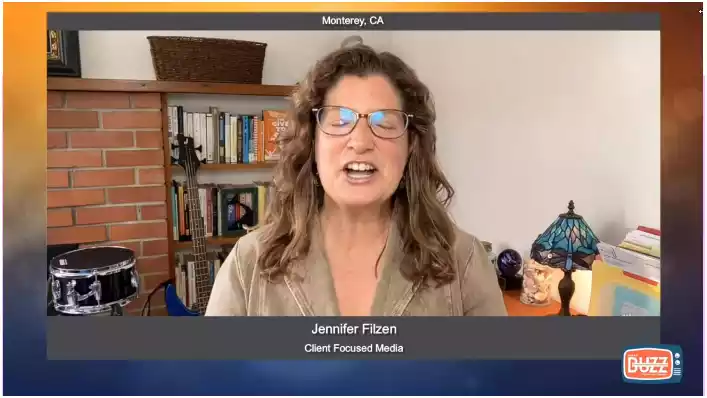Managing the Complicated Healthcare Prior Authorization System
Unlock the secrets of navigating healthcare prior authorization system. This critical checkpoint ensures that your medical treatments align with insurance standards, preventing unnecessary expenses and delays. Delve into our resource to master the system and advocate effectively for your health needs. Read more to take control of your healthcare experience!

Understanding what is prior authorization in pharmacy is crucial in this context. This process, required by insurance companies to approve certain medications, can be streamlined with advanced technology, transforming the healthcare experience. Many pharmacies are already benefiting from these innovations. With numerous solutions available, how does one choose the best one?
Let’s dive in!
Table of Contents
Managing the Complicated Healthcare Prior Authorization System

It’s common to compare navigating the healthcare system to navigating a maze that presents obstacles and difficulties at every turn. Prior permission (PA) might be a confusing maze in this maze. What was once a way for insurance companies to control expenses and guarantee proper care has, for many, evolved into a major barrier to prompt treatment and a cause of annoyance for both physicians and patients. We will examine the subtleties of prior authorization in healthcare and provide recommendations for improving process management in this extensive book. This is your guide to successfully navigating the prior authorization maze, whether you’re a patient looking to understand and fight for your care or a healthcare professional trying to save paperwork.
Prior Authorization’s Objective and Consequences
Many insurance companies utilize the prior authorization process to decide whether to pay for a course of treatment, medical equipment, or prescription medicine. Before any money is spent, it is intended to be confirmed that the suggested course of therapy is suitable and medically necessary. However, many believe that what was once a noble attempt to save unnecessary medical expenses has turned into a burdensome barrier that prevents patients from receiving treatment and puts more administrative strain on healthcare providers.
Why Prior Authorization Exists
The United States spends more on healthcare than any other country, and incorrect or unnecessary use of medical services may be the reason for a large percentage of this expense. To avoid these absurd charges, doctors must demonstrate the necessity of particular procedures and secure prior authorization.
Typical Errors
During the prior authorization procedure, insurance companies and providers manually communicate via phone calls, faxes, and paperwork. The manual procedure is time-consuming, error-prone, arduous, and susceptible to unjustified denials. Both patients and physicians frequently experience lengthy wait times and administrative problems, which can negatively impact patient results.
The Prior Authorization Process, Step by Step
To effectively manage the prior authorization process, one must first understand it. Here is a step-by-step breakdown of what typically occurs:
Step 1: Identification of Need
The healthcare provider determines that a particular medical intervention is necessary for the patient’s care.
Step 2: Review of Insurance Policy
The provider reviews the patient’s insurance policy to determine if the intervention requires prior authorization.
Step 3: Submission of Request
If prior authorization is necessary, the provider’s office begins the process by submitting a request to the insurance company. This request usually involves completing a form and providing medical documentation.
Step 4: Insurance Review
The insurance company reviews the request, often with medical professionals who assess the treatment’s medical necessity and adherence to the policy’s guidelines.
Step 5: Approval or Denial
The insurance company notifies the provider’s office of the decision. The insurance company has the right to request further details, approve, deny, or demand that the therapy be changed.
Step 6: Patient Notification
The patient is informed of the determination. If the treatment is approved, the care plan proceeds as planned. If a patient is denied treatment, they and their provider might have to look into other choices or start the appeals process.
Techniques for Handling the Prior Approval Procedure
Being proactive is essential because of the intricacies and possible hold-ups related to previous authorization. The following are a few tactics to aid with previous authorization process management:
Establish Clear Communication Channels
Effective communication is critical. To oversee the process, providers have to set up a specialized prior authorization team or point person. Additionally, patients should be informed about the possibility of prior authorization requirements and the importance of having excellent communication with their clinicians.
Remain knowledgeable and aware.
Patients and providers should be informed of any recent changes to insurance policies and prior authorization requirements. By applying this knowledge, you can accelerate the process and avoid frequent mistakes such as sending in wrong or outdated papers for scrutiny.
Leverage Technology and Automation
Automation and technology are being progressively adopted by the healthcare sector to improve administrative procedures. Providers can employ electronic health record (EHR) systems that link with prior authorization management systems. It might be advantageous for patients to interact with their insurance companies and providers via online portals and smartphone apps.
Develop More Robust Bonds with Payers
You can have a better understanding of insurance companies’ prior authorization procedures by fostering good relationships with them. This may result in more effective communication and an increased likelihood of getting approvals on schedule.
Encourage Change
Patients and providers should have the confidence to push for modifications to the prior authorization procedure. This could entail giving insurance firms input or endorsing legislative initiatives aimed at lowering red tape and enhancing the effectiveness of the authorization procedure.
Patient Empowerment via Education and Advocacy

Patients frequently discover that they are powerless over a prior authorization procedure that they do not fully comprehend.
Empowerment through education and advocacy is critical to managing this aspect of healthcare.
Understand Your Insurance Policy
The first step for patients is to understand their insurance policies thoroughly. They should be aware of what is covered, what requires prior authorization, and how to obtain it.
Communicate Proactively
Proactive communication between patients and healthcare providers is recommended. This includes sharing their insurance information and any known requirements for prior authorization before treatment is recommended.
Keep Detailed Records
Maintaining detailed records of communications, medical history, and prior authorization requests can help patients manage the process more effectively. These records may be invaluable in the event of a denial or appeal.
Seek Support
Patient advocacy groups and organizations often provide guidance and resources for individuals navigating the healthcare system. Patients should not hesitate to seek these resources.
I'm very thankful for Portiva who I know is looking after my practice while I'm gone the virtual assistants can manage prescription refills, documents they can triage patients and just kind of answer administrative questions and they can handle a lot on their own. But also, they're very good about contacting me if there's any emergency or anything I need to attend to. So I'm very thankful for Portiva they can help almost any provider almost anywhere and it really allows for some good work-life balance as I'm getting to experience right now at my family farm so I'm very thankful for Portiva and I'm very happy to use their services"

Board Certified Family Medicine Physician

Portiva's Virtual Medical Assistant - I have all the support I need. There's somebody checking my email, any patient messages. Patients are still able to schedule and handle any scheduling issues and any kind of billing that needs to still go through. Portiva hands handles it all for me. I have support i have somebody that I can access 24/7 pretty much. It's all very seamless. If somebody has an emergency or needs a medication called in. I know that the va's at portiva will handle that for me.

Board Certified Family Medicine Physician

The Provider Perspective: Streamlining Administrative Burdens
 For providers, the prior authorization process can be a significant administrative burden that detracts from patient care. Finding ways to streamline this process is imperative.
For providers, the prior authorization process can be a significant administrative burden that detracts from patient care. Finding ways to streamline this process is imperative.
Invest in Staff Training
Ensuring staff are well-trained in the prior authorization can improve efficiency and reduce errors. Continuous education and training keep teams updated on policy changes and best practices.
Utilize Technology Solutions
Providers should consider leveraging technology solutions, such as prior authorization software or services, to automate and streamline the process. These solutions can significantly reduce the time and effort required for each authorization request.
Collaborate with Peers and Professional Organizations
Collaboration can be a powerful tool for sharing best practices, pooling resources, and advocating for change. Providers should engage with professional organizations to support collective efforts to reform the prior authorization process.
Advocating for Systemic Change
The challenges associated with prior authorization are manageable but require systemic change. Advocacy at the individual and organizational levels can help bring about this change.
Support Legislative Efforts
Providers and patients can support local, state, and national legislative efforts that aim to reform the prior authorization process. These efforts may focus on increasing transparency, reducing administrative requirements, or establishing timelines for authorization review.
Engage in Industry Dialogues
Participation in industry dialogues, such as roundtable discussions or working groups, can provide a forum for stakeholders to voice their concerns and work towards solutions.
Encourage Policyholder Feedback
Insurance companies should actively solicit and incorporate policyholders’ feedback on their prior authorization process experiences. This feedback can lead to more patient-centered policies and practices.
Conclusion
It is indisputable that prior permission in the healthcare industry is difficult and complicated. Providers and patients, however, can contribute to a more effective and efficient system by learning about the procedure, being up to date, using technology, and pushing for reform. Even though we might not be able to completely remove the previous authorization maze, we can definitely make it easier to navigate. By working together and being dedicated, we can make sure that prior authorization accomplishes its intended goals of controlling costs and delivering the right care without getting in the way of the patients it was designed to safeguard.
To learn more about medication approval that can enhance your medical practice. Discover more about Portiva and unlock a world of possibilities by visiting our homepage today!
- Prior authorization changes
- Proactive risk management in prior authorization
- Educating and supporting patients in prior authorization
- Prior authorization requirements
- Understanding prior authorization insurance
- Prior authorization on patient care
- Decoding authorization denials
- Enhancing payer-provider communication in prior authorization
- Quality assurance optimizes prior authorization outcomes
- Achieving ideal results in prior authorization
- Tackling authorization denials head-on
- Ability of managing authorization denials
- Future of prior authorization
- Role of quality assurance in streamlining prior authorization processes
- Importance of efficient prior authorization support
- Reducing stress with real-time prior authorization
- How legal principles impact prior authorization processes
- Power of prior authorization analytics
- Prior authorization handbook for patients

